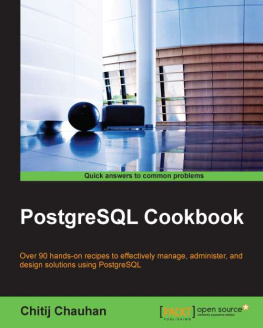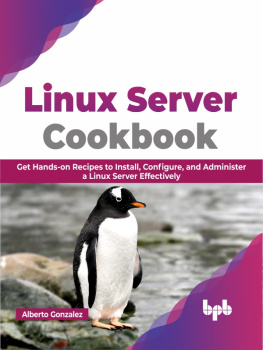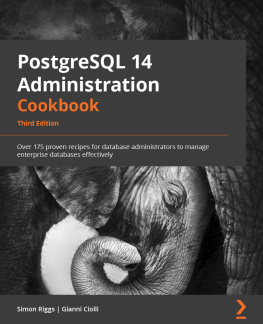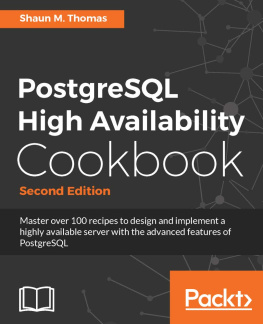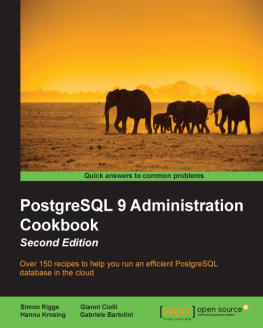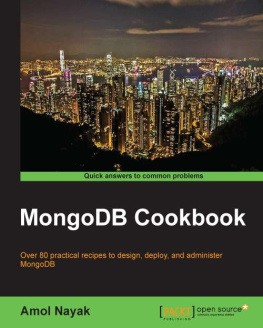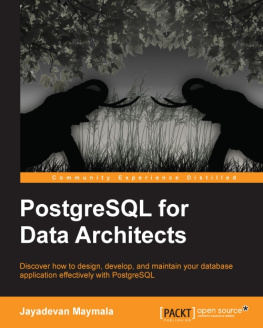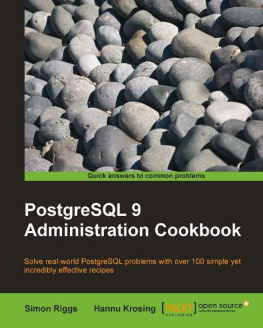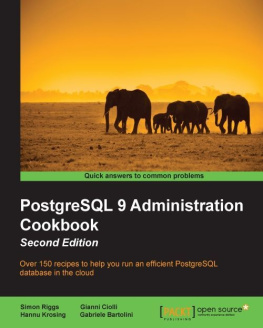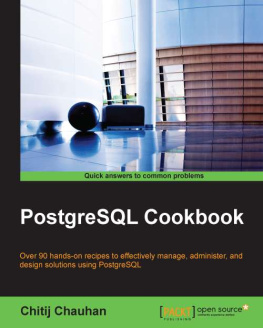About the Reviewers
Naoya Hashimoto has been working on system design and integration with open source software for years. Recently, his career and interest have shifted toward cloud engineering on both public and hybrid clouds, such as AWS, as well as toward orchestration tools, such as Chef or CloudFormation. He has reviewed the books Icinga Network Monitoring and Building a Home Security System with BeagleBone , both by Packt Publishing. Moreover, currently he is a technical reviewer of the book Building Networks and Servers Using Beaglebone , which is also by Packt Publishing.
Thanks to the author and the project coordinator, Purav, who gave me this opportunity to review the book. I am very impressed with their work and this project because it gives us a chance to learn about the latest technology of PostgreSQL 9.x.
Sergio Martnez-Losa Del Rincn is a computer engineer who loves programming languages since the time he was in high school, where he learned about programming and computer interactions. He is always learning and discovers something new to learn everyday.
He likes all kind of programming languages, but he focuses his efforts on mobile development with native languages, such as Objective-C (iPhone), Java (Android), and Xamarin (C#). He builds Google Glass applications as well as mobile applications for iPhone and Android devices at work. He also develops games for mobile devices with cocos2d-x and cocos2d. He likes cross-platform applications as well. He has reviewed Learning Xamarin Studio , Packt Publishing .
He loves challenging problems, and he is always keen to work with new technologies. More information about his experience and details can be found at www.linkedin.com/in/sergiomtzlosa.
Danny Sauer has been a professional Unix geek of various stripes for roughly 20 years, most recently in the flavor of security engineer. His experience with open source databases extends through most of that time period, both as DBA and as a user. He currently lives with his wife in an old house in a small town outside of a small city, which provides plenty of opportunity to restore antique houses, cars, and computers.
www.PacktPub.com
Support files, eBooks, discount offers, and more
For support files and downloads related to your book, please visit www.PacktPub.com.
Did you know that Packt offers eBook versions of every book published, with PDF and ePub files available? You can upgrade to the eBook version at > for more details.
At www.PacktPub.com, you can also read a collection of free technical articles, sign up for a range of free newsletters and receive exclusive discounts and offers on Packt books and eBooks.
https://www2.packtpub.com/books/subscription/packtlib
Do you need instant solutions to your IT questions? PacktLib is Packt's online digital book library. Here, you can search, access, and read Packt's entire library of books.
Why Subscribe?
- Fully searchable across every book published by Packt
- Copy and paste, print, and bookmark content
- On demand and accessible via a web browser
Free Access for Packt account holders
If you have an account with Packt at www.PacktPub.com, you can use this to access PacktLib today and view 9 entirely free books. Simply use your login credentials for immediate access.
Preface
PostgreSQL is a database server that is available on a wide range of platforms and is one of the most popular open source databases deployed in production environments worldwide.
It is also one of the most advanced databases, with a wide range of features that challenge even many proprietary databases. This book offers you an insight into the various features and implementations of these features in PostgreSQL. It is intended to be a practical guide for database administrators and developers alike, with solutions related to data migration, table partitioning, high availability and replication, database performance, and using Perl and Python languages for integration with PostgreSQL.
What this book covers
, Managing Databases and the PostgreSQL Server , helps you to create databases and understand the concept of schemas, roles, users, groups, and tablespaces in the PostgreSQL server.
, Controlling Security , lets you see and understand the security controls and levels of security that are present in PostgreSQL. After this chapter, you should be able to understand and configure the security controls that exist in the PostgreSQL server. You should also be able to use SSL connections in PostgreSQL in order to encrypt data.
, Backup and Recovery , shows the different backup and recovery scenarios that can be implemented in PostgreSQL. After this chapter, you should be familiar with logical and physical backup methods and restoring databases or database objects in a recovery-based scenario.

